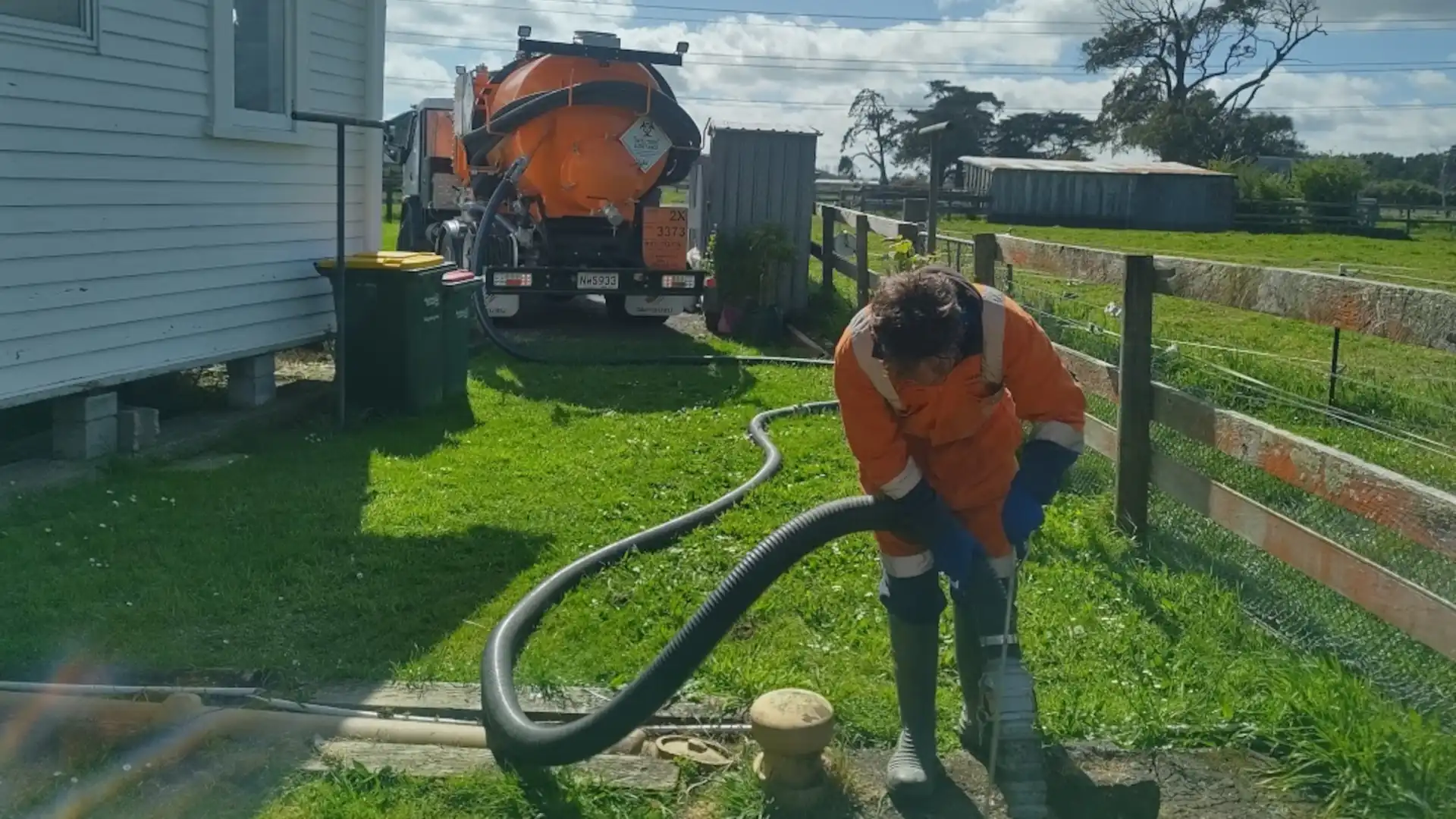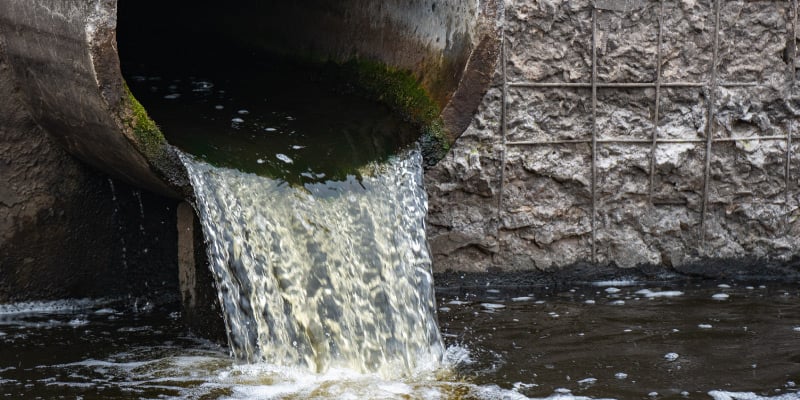How Fluid Garbage Disposal Functions: A Thorough Introduction of Methods and Technologies Used

Overview of Liquid Waste Kind
The complexity of liquid waste types requires a comprehensive understanding of their qualities and implications for disposal. Fluid waste can generally be classified right into numerous kinds, including industrial, community, agricultural, and contaminated materials. Each classification displays distinct residential properties, needing details monitoring methods to alleviate environmental and health risks.
Industrial liquid waste stems from making processes and frequently contains a range of contaminants, such as hefty metals, solvents, and organic substances. Local fluid waste, mainly comprising wastewater from houses and business establishments, contains raw material, nutrients, and pathogens (industrial wastewater treatment). Agricultural fluid waste, including runoff from ranches, might include plant foods, pesticides, and pet waste, posturing threats to water high quality and communities
Unsafe liquid waste is identified by its toxicity, reactivity, or potential to trigger damage. This group consists of compounds like acids, bases, and certain chemicals that demand strict handling and disposal methods. Understanding these varied liquid waste kinds is important for creating effective disposal approaches and making sure compliance with environmental laws. Proper classification and characterization are essential for carrying out appropriate treatment strategies and minimizing the adverse effect on public health and the atmosphere.
Physical Therapy Methods

Testing is the preliminary step, where bigger fragments and particles are gotten rid of from the fluid waste utilizing displays or grates. In sedimentation containers, much heavier fragments resolve at the bottom, forming a sludge layer, while the made clear liquid can be further treated.
Filtering is another vital method that entails passing the liquid with porous products, such as sand or membrane layers, to capture smaller sized bits. This step enhances the top quality of the liquid, making it suitable for succeeding treatment procedures.

Chemical Therapy Strategies
Chemical treatment strategies are necessary for efficiently taking care of liquid waste, especially in dealing with liquified and colloidal pollutants that physical approaches may not appropriately get rid of. These methods utilize different chemical representatives to reduce the effects of, speed up, or transform hazardous compounds right into less unsafe forms.
One typical technique is coagulation and flocculation, where chemicals such as alum or ferric chloride are added to promote the gathering of suspended bits. This procedure boosts sedimentation, permitting for much easier elimination of the resulting find out here now sludge. Additionally, oxidation processes, utilizing representatives like chlorine or ozone, are employed to damage down intricate organic compounds and microorganisms, providing the waste much safer for discharge or further treatment.
Neutralization is one more critical technique, which changes the pH of acidic or alkaline waste streams to neutral degrees, avoiding possible injury to downstream systems and the environment. Additionally, advanced oxidation processes (AOPs) use combinations of oxidants and ultraviolet light to break down relentless toxins, attaining a greater level of therapy performance.
Organic Therapy Processes
Organic treatment processes play an important role in the administration of liquid waste by utilizing bacteria to break down raw material and minimize pollutant levels. These processes can be broadly classified right into anaerobic and cardio therapies, each using certain microbial communities to accomplish effective waste degradation.
Aerobic therapy entails making use of oxygen to facilitate the break down of organic products by germs. This process is typically implemented in turned on sludge systems, where oygenation containers supply a favorable go right here environment for microbial development, causing the oxidation of natural pollutants. The resultant biomass can be divided from dealt with effluent with sedimentation.
In contrast, anaerobic therapy occurs in the lack of oxygen, counting on different bacteria to damage down raw material. This method is especially advantageous for high-strength waste, as it produces biogas, a renewable resource resource, while lowering sludge production. Technologies such as anaerobic digesters are frequently used in community and industrial applications.
Both aerobic and anaerobic biological therapies not only decrease the environmental influence of liquid waste yet likewise facilitate source recovery, making them necessary components of lasting waste management methods. Their efficiency, efficiency, and flexibility sustain their widespread application throughout various industries.
Emerging Technologies in Disposal
Cutting-edge methods to fluid garbage disposal are rapidly advancing, driven by improvements in modern technology and an enhancing emphasis on sustainability. Amongst these arising technologies, membrane layer bioreactors (MBRs) have acquired traction for their capability to incorporate organic therapy with membrane layer purification, causing premium effluent that can be recycled in different applications. MBRs make it possible for check my site smaller sized footprints and much more effective procedures contrasted to standard systems.
An additional encouraging development is using anaerobic digestion integrated with nutrient healing innovations, which not only treats liquid waste however likewise produces biogas and recuperates useful nutrients like nitrogen and phosphorus. This double advantage improves resource effectiveness and decreases environmental effect.
Furthermore, progressed oxidation processes (AOPs) are being embraced for the degradation of complex organic pollutants. These techniques use powerful oxidants and stimulants to break down impurities at the molecular degree, supplying a very efficient option for challenging waste streams.
Moreover, the integration of expert system and artificial intelligence in waste administration systems is optimizing functional performance and predictive maintenance, bring about minimized expenses and improved ecological compliance. These technologies mirror a considerable shift in the direction of more effective and lasting liquid waste disposal techniques.
Final Thought
In conclusion, efficient liquid garbage disposal necessitates a comprehensive understanding of various techniques and modern technologies. The integration of physical, chemical, and organic therapy methods makes sure the efficient monitoring of diverse waste kinds. Additionally, the appearance of ingenious modern technologies improves therapy efficiency and advertises sustainability in waste management techniques. By continually advancing these methods, it comes to be possible to address the growing obstacles connected with fluid waste, inevitably adding to environmental management and resource healing.
Fluid waste disposal is a crucial element of environmental monitoring, calling for a comprehensive understanding of various techniques and innovations tailored to different waste types. Liquid waste can extensively be categorized into a number of types, including industrial, community, agricultural, and dangerous waste. Agricultural liquid waste, including runoff from ranches, may contain fertilizers, pesticides, and pet waste, posing threats to water top quality and ecosystems.
Various physical treatment approaches play a critical duty in taking care of liquid waste successfully - industrial wastewater treatment.In final thought, effective liquid waste disposal demands a thorough understanding of numerous techniques and technologies